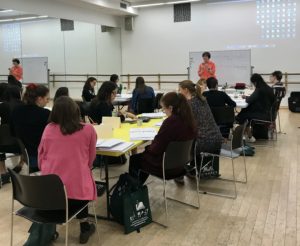Supplementing HMH Foundational Skills Curriculum with Orton-Gillingham Instruction
Houghton Mifflin Harcourt (HMH) foundational skills curriculum provides an a pathway to literacy forstudents, focusing on phonics and other essential language-based knowledge. However, for some learners, especially those with dyslexia or other reading difficulties, there may be gaps in this approach that require additional resources. This is where the Orton-Gillingham instruction can play a vital role.
Orton-Gillingham is a diagnostic-prescriptive approach to reading instruction, born from the work of Dr. Samuel T. Orton and Anna Gillingham. It is highly individualized and directly addresses the needs of learners with dyslexia or reading difficulties (Ritchey & Goeke, 2006). The key strength of the Orton-Gillingham approach is its multisensory strategy, which incorporates sight, hearing, touch, and movement to enhance reading, spelling, and writing comprehension (Birsh & Carreker, 2018).
One potential gap in the HMH foundational skills curriculum is the customization needed for struggling readers. While HMH provides robust phonics instruction, it might not fully meet the needs of students who need a more individualized approach, especially those with dyslexia. The Orton-Gillingham approach, being diagnostic-prescriptive, supplements the HMH curriculum by providing the level of individualization these students require (Ritchey & Goeke, 2006).
A second potential gap lies in the multisensory aspect of learning. HMH focuses predominantly on visual and auditory learning, but research has shown that a multisensory approach that includes kinesthetic elements can be particularly beneficial for students with reading difficulties (Birsh & Carreker, 2018). Implementing Orton-Gillingham strategies can complement the HMH curriculum by incorporating tactile and movement-based activities, which can significantly enhance comprehension and retention for these students.
Lastly, Orton-Gillingham’s systematic and cumulative approach can provide additional scaffolding that many learners need. While HMH’s curriculum is also systematic, the step-by-step progression in Orton-Gillingham, which ensures mastery of one concept before introducing the next, offers a layer of reinforcement that can be particularly beneficial for struggling readers (Ritchey & Goeke, 2006).
The Orton-Gillingham approach provides an essential supplement to the HMH foundational skills curriculum for students with reading difficulties. It enhances the HMH curriculum by addressing individual needs through diagnostic-prescriptive instruction, incorporating a multisensory strategy, and ensuring a systematic, cumulative learning experience. While HMH offers a strong literacy foundation, combining it with Orton-Gillingham instruction can provide a well-rounded, more encompassing learning pathway for all students, ultimately leading them to become proficient readers.
Works Cited:
Birsh, J. R., & Carreker, S. (2018). Multisensory teaching of basic language skills. Baltimore, MD: Paul H. Brookes Publishing Co.
Ritchey, K. D., & Goeke, J. L. (2006). Orton-Gillingham and Orton-Gillingham-Based Reading Instruction: A Review of the Literature. The Journal of Special Education, 40(3), 171–183.






